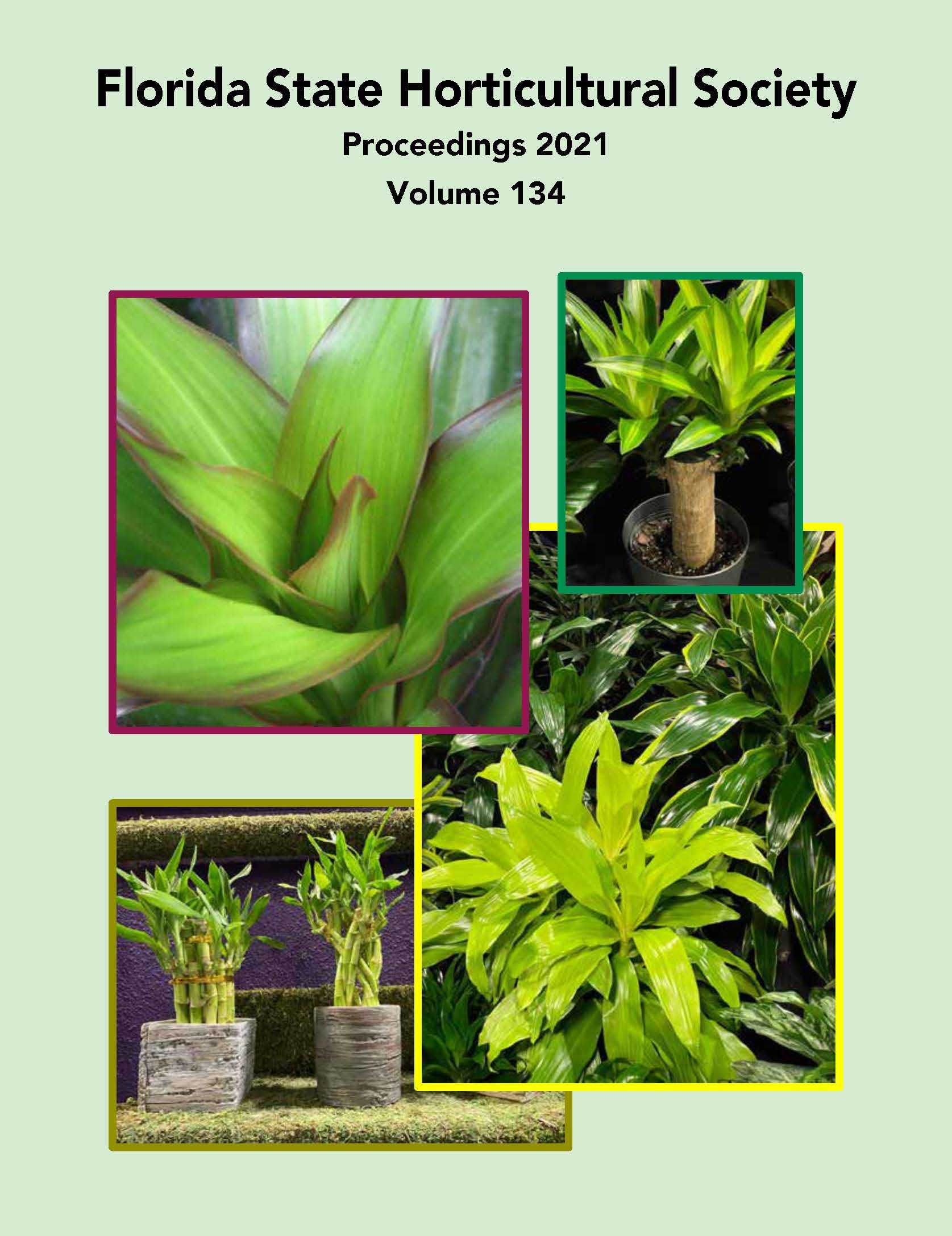Abstract
A brussels sprout cultivar trial was conducted in Northeast Florida at the University of Florida/IFAS (UF/IFAS) Hastings Agriculture Extension Center (HAEC) in Fall 2020. Brussels sprouts are considered a specialty crop in the United States with a reported 9445 harvested acres in 2017, according to the USDA–NASS Census of Agriculture. Brussels sprouts are becoming a trendy treat in upscale restaurants. Over 95% of the harvested acreage goes to fresh market. Currently, 85% of the acreage is grown in California, but Northeast Florida may have a competitive window in the fall. Cultivar trials were planted for two consecutive seasons and marketable yields were measured according to USDA grading standards. Three green varieties (‘Marte’, ‘Speedia’, and ‘Divino’) were planted on 13 November 2019 in Year 1 (Y1) and on 5 Oct. 2020 in Year 2 (Y2). Transplants were planted on 40-inch rows with 16-inch interrow spacing in a randomized complete-plot design with four replications. Average marketable harvest yields (lb/acre) for all four replications in Y1 and Y2 were 4248 and 5275 lb/acre for ‘Marte’, 3625 and 4670 lb/acre for ‘Speedia’, and 2694 and 3101 for ‘Divino’. The primary differences in production year include days to maturity (i.e., 127–131 in Y1 and 120 in Y2) and in-season pruning in Y1 (i.e. the tops were removed within the first 60 days of planting to allow for fuller sprout production). Three additional red varieties were added to the trial in Y2, namely ‘Redarling’, ‘Rubine’, and ‘Red Ball’. The only red cultivar that produced any measurable marketable yield was ‘Redarling’ (2651 lb/acre), but the maturity date was later (135 days after transplanting) and the average yield was significantly lower than the three green varieties. Nutritional benefits in the form of anthocyanin concentrations were detected in ‘Redarling’ at 13 g/100 g (fresh weight), while none were detected in ‘Divino’.

